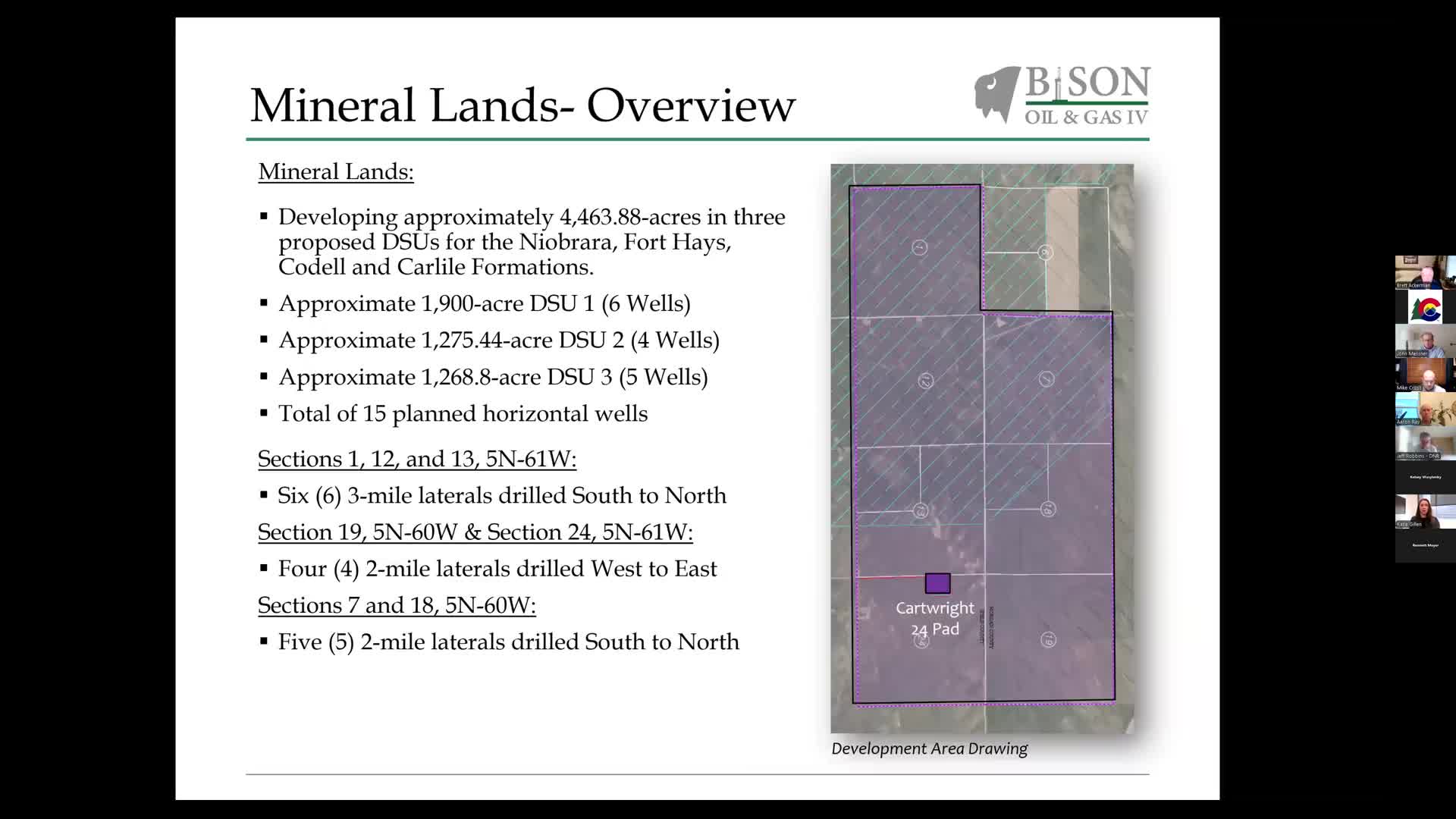Bison plans 15 new horizontal wells in Weld County's Cartwright DSU development
June 04, 2025 | Energy and Mineral Impact Assistance State Advisory Committee, Governor's Boards and Commissions, Organizations, Executive, Colorado
Thanks to Scribe from Workplace AI , all articles about Colorado are free for you to enjoy throughout 2025!

This article was created by AI using a video recording of the meeting. It summarizes the key points discussed, but for full details and context, please refer to the video of the full meeting. Link to Full Meeting
The proposed site is located in a remote area, with no residential buildings, schools, or disproportionately impacted communities within a two-mile radius. The nearest high-priority habitat is over 2,300 feet away, ensuring that sensitive ecological areas are preserved. The development plan emphasizes minimizing surface disturbance, with only 18 acres disturbed during construction and 9.87 acres remaining after interim reclamation.

Before you scroll further...
Get access to the words and decisions of your elected officials for free!
Subscribe for FreeBison, the company behind the project, has outlined a haul route that avoids towns and childcare facilities, further reducing potential disruptions. The site will utilize existing infrastructure, including pipelines and access roads, to limit additional surface impacts. Bison has also committed to using advanced technologies, such as dual fuel engines with battery assist and a closed-loop pitless system for drilling, to enhance operational efficiency and reduce emissions.
During the meeting, Bison presented a comparison of drilling fluids, highlighting the advantages of using oil-based muds over synthetic alternatives. The company reported that oil-based muds resulted in faster drilling times and reduced equipment wear, contributing to lower emissions overall. Bison's analysis indicated that wells drilled with oil-based mud averaged 3.28 days to reach total depth, compared to 4.55 days for those using synthetic muds.
The hearing concluded with Bison's commitment to implementing best management practices to mitigate environmental impacts throughout the drilling process. The first phase of development is scheduled to begin in February 2026, with production expected to commence by July 2026. The commission will continue to monitor the project's progress and its adherence to environmental standards.
Converted from ECMC Commission Hearing - June 4, 2025 meeting on June 04, 2025
Link to Full Meeting
Comments
View full meeting
This article is based on a recent meeting—watch the full video and explore the complete transcript for deeper insights into the discussion.
View full meeting




